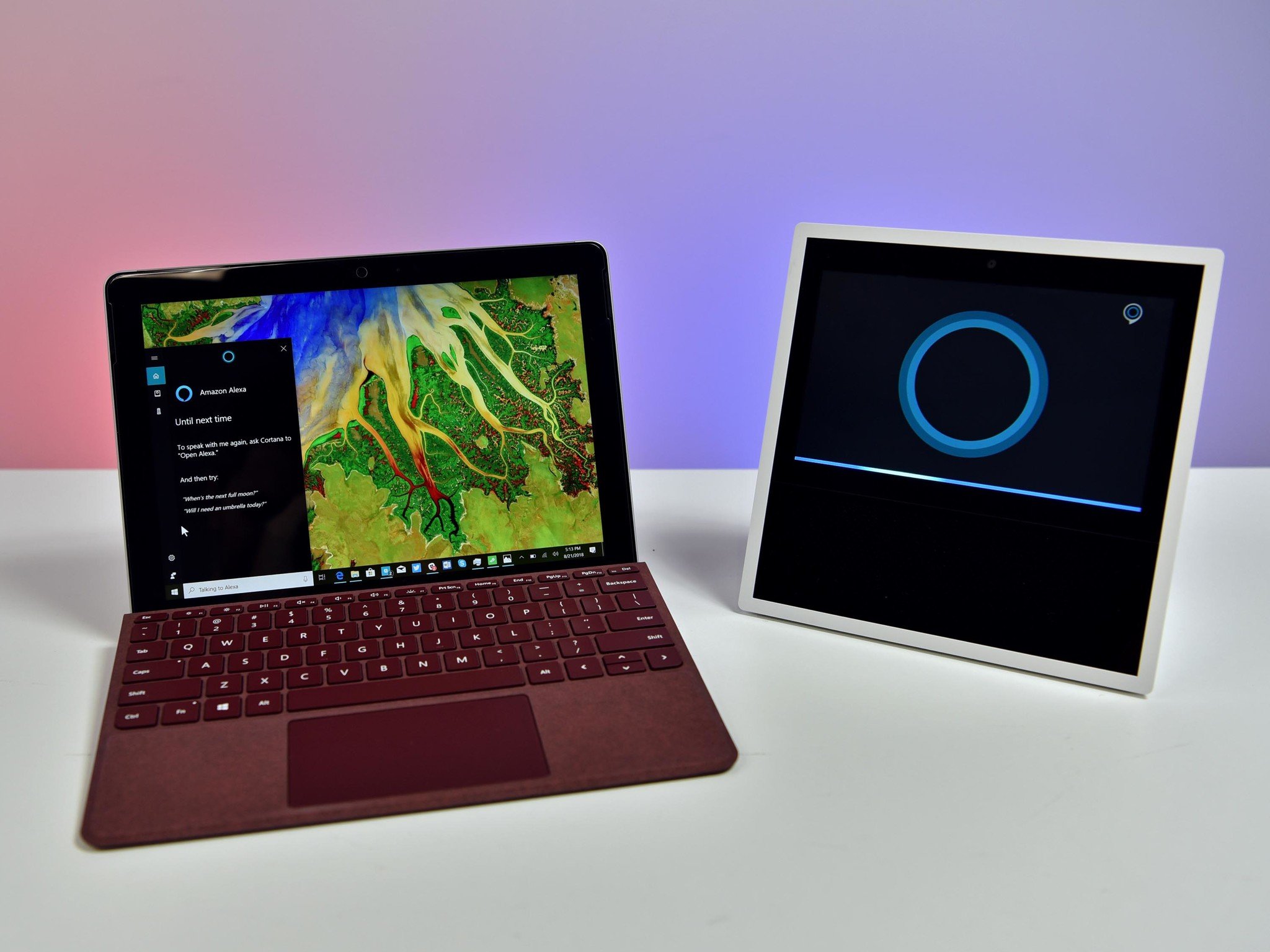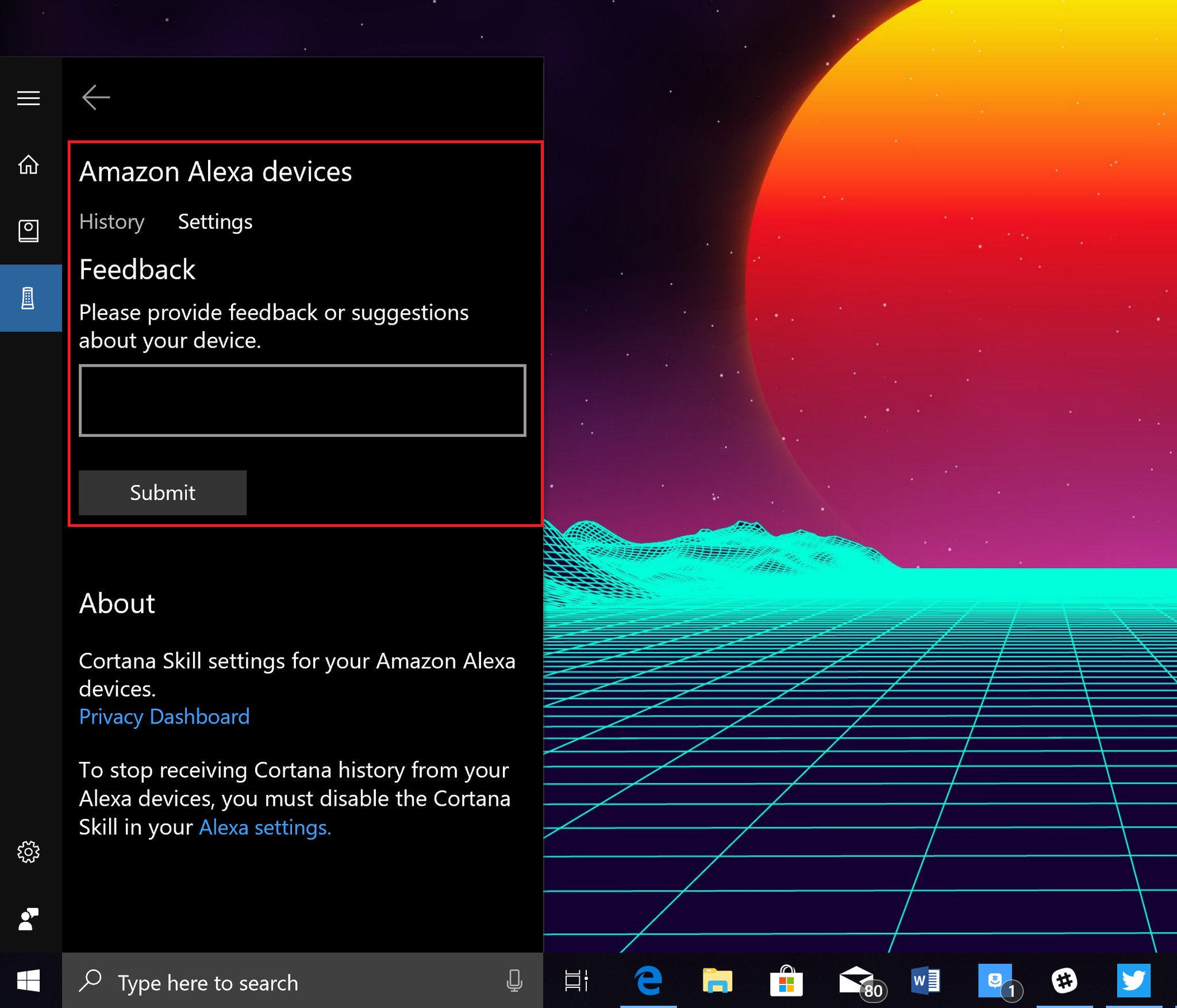First look at Amazon Alexa and Microsoft Cortana voice integration (video)
We took the Cortana-Alexa collaboration out for a test spin.

Microsoft and Amazon recently released their long-gestating Alexa-Cortana partnership in a limited preview to those in the U.S. (and evidently, some in Canada, too).
The program is just the first step in getting the dual assistants into the real world. From there, with user feedback and usage, both companies will take further steps to add and refine functionality.
A voice match made in heaven?
We picked up an Amazon Echo Show to see – literally – how Cortana looks on Alexa. While the animation and placeholder are not impressive, it's still somewhat surreal to see Microsoft's digital assistant living on Amazon's high-end hardware.
Likewise, for Windows 10 users or those with the Harmon Kardon Invoke, the Alexa integration is almost a bigger deal. Users on Windows 10 get much more in return by calling up Alexa at least for specific features including Amazon shopping, package tracking and its more extensive set of skills.
However, being a preview, a lot of features are missing, with an IOU from the companies. To be fair, both Amazon and Microsoft are upfront with these limitations, such as you cannot yet listen to Pandora through Alexa through Cortana, but these are hurdles likely to be overcome. The overlap between the two assistants also became substantial once Cortana got IFTTT support.
For those on Windows 10, giving feedback is encouraged. Just by opening Cortana > Devices > Amazon Alexa Devices > Settings users can type feedback right to the team handling the project.
It's not clear if consumers will actually utilize the dual-assistant tactic, but there is something to be said about Amazon and Microsoft cooperating. The notion that there can and will only be one digital assistant requires that you give up any apps, phones, PCs, and other hardware outside that ecosystem – that is, you acquiesce and surrender to a single, monolithic network like Apple (or Google).
All the latest news, reviews, and guides for Windows and Xbox diehards.
If, however, you see the future of computing as being more heterogeneous, what Amazon and Microsoft are doing is the right approach ... even if it is a bit awkward right now.

Daniel Rubino is the Editor-in-chief of Windows Central. He is also the head reviewer, podcast co-host, and analyst. He has been covering Microsoft since 2007 when this site was called WMExperts (and later Windows Phone Central). His interests include Windows, laptops, next-gen computing, and wearable tech. He has reviewed laptops for over 10 years and is particularly fond of 2-in-1 convertibles, Arm64 processors, new form factors, and thin-and-light PCs. Before all this tech stuff, he worked on a Ph.D. in linguistics, performed polysomnographs in NYC, and was a motion-picture operator for 17 years.


